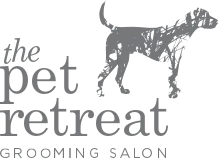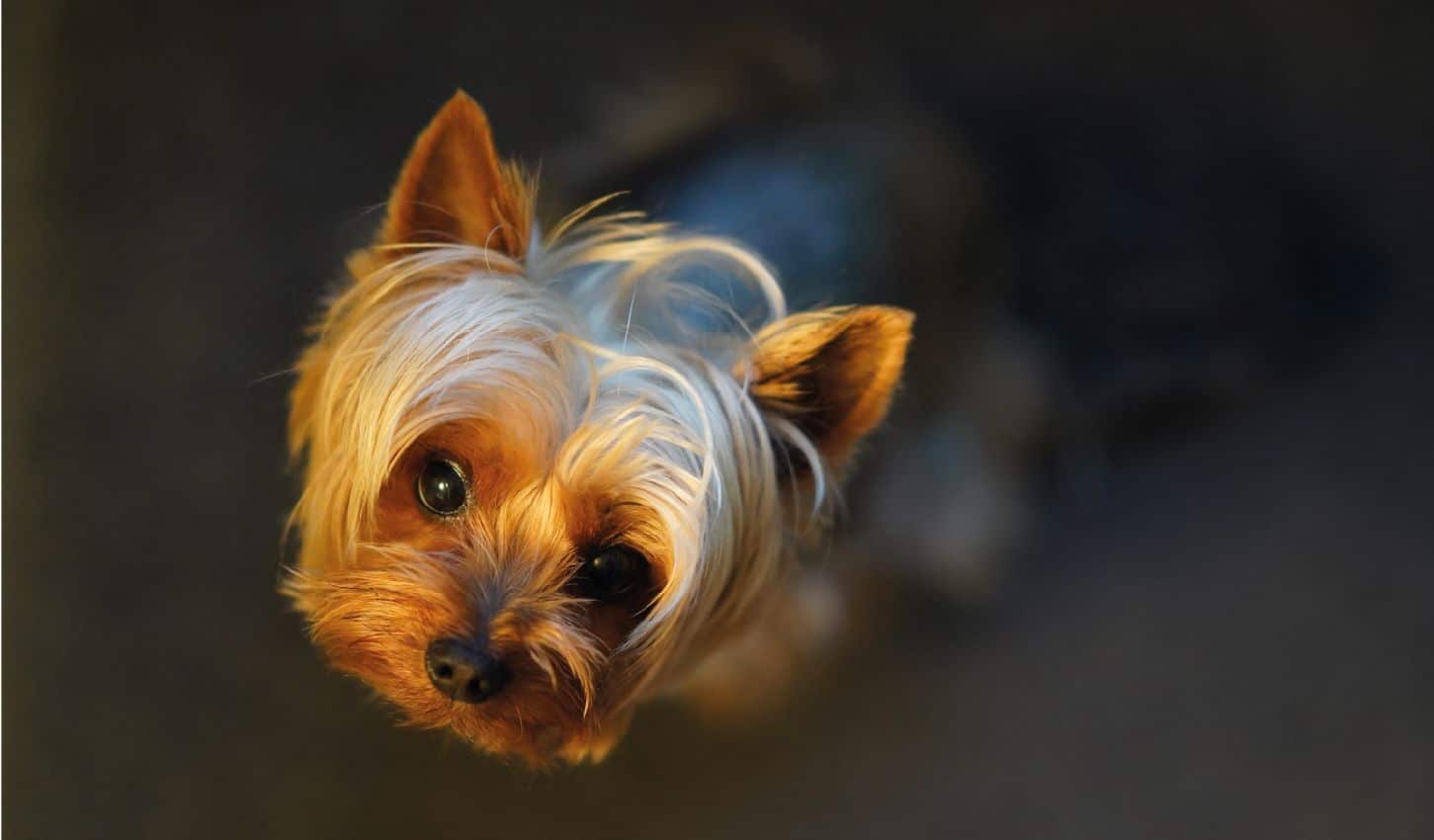A helpful long coat grooming guide from your Cheshire grooming team
Despite their striking visual appeal, dogs with long-haired coats require a huge amount of maintenance. As well as regular trips to the grooming salon, you’ll also need to adopt a rigorous home grooming regime to keep their flowing locks healthy and matt free. In this blog we tell you all you need to know about long-haired grooming so that you know what to expect from your visit to the groomers and to help keep their coat in check at home.
Contents
- What is a long-haired coat?
- What dog breeds have a long coat?
- What are the benefits of a long coat?
- About Long Coat Grooming
- What is required to maintain a long coat at home?
- What our groomers say
What is a long-haired coat?
A long-haired coat type will be long and flowing and may even reach the floor in some breeds. Their coats can range in thickness and texture, with some having a fine silky feel and others having thicker more coarse feel. As with all dogs, the amount that their hair is brushed will influence how healthy and their coat is, but with long haired dogs home grooming is always essential and a visit to the groomers is recommended every 6-8 weeks..
You’ll probably have seen some long haired breeds at Crufts or other dog shows, with hair covering their eyes and bouncing as they run around the ring. Despite this style being the breed standard for many long haired coat breeds, owners that don’t intend on visiting the show ring may often opt for a more practical shorter style. In these instances we’ll try to preserve their personality whilst making the hair easier to maintain in between grooms. Even still, home grooming and maintenance is always essential.
What breeds have long coats?
Dog’s that have long-haired coats can vary in all shapes and sizes, from Yorkshire Terriers to Old English Sheepdogs. Here’s a list of some of the most common long coated dogs: –
- Lhasa Apso
- Shih Tzu
- Maltese
- Yorkshire Terrier
- Havanese
- Powderpuff Chinese Crested
- Skye Terrier
- Coton de tulear
- Tibetan Terrier
- Bearded Collie
- Old English Sheepdog
- Briard
- Afghan Hound
What are the benefits of a long coat?
With many long-haired breeds, the benefits can also count as negatives depending on your lifestyle, the weather, and your grooming habits. Let’s break it all down for you here. Remember, we’re owned and run by vets here at The Pet Retreat, so we know a thing or two about this kind of thing.
Looks
Let’s get the important stuff out of the way first: long haired breeds look magnificent when they’re in good shape. Their hair flows as they move, glistening in the light like a model in a shampoo advert. If you maintain a strong home grooming routine and regularly visit the groomers, they will literally look picture perfect.
On the other hand, if you let their coat maintenance slip, things can go the other way. Their coats can appear dull and matted without regular brushing and shampooing, this can cause discomfort for your pet. If your dog has really long hair that trails on the floor, then muddy walks will ruin their coat if you don’t bathe them regularly.
Warmth
You won’t need any extra coats for your dog in the winter. Many long haired breeds originate from areas that were cold, where they were required to do lots of outdoor work. They’ve been bred with this in mind. Their thick, dense fur will always keep them warm.
On the other hand, in the summer months, things can get too warm. Your dog can quickly tire on long walks and it can lead to heat exhaustion or heat stroke. If your dog leads an active lifestyle you might want to cut their coat right back to avoid this.
Protection
Their long coat can offer them an added layer of protection from a range of things, whether it’s rain, snow or sharp objects that they rub against on long walks. This extra fur can reduce their chances of getting cuts or grazes.
Unfortunately, it can also attract pests and parasites and treating them can be more difficult due to the thick nature of their coat. Their long coat may also pick up more debris as it trails along the ground or latches on to brushes. Due to it covering their frame it’s also more difficult to notice ticks or worrying lumps and bumps.
You should regularly check their skin for anything that could be concerning. It’s also easy to miss any increase or loss in weight due to their coat making up most of their surface area.
About long-haired coat grooming
To do long-haired coat grooming the correct way, you’ll want regular visits to the groomers backed up by a solid and consistent home grooming routine. Here’s what you can expect on your visit to The Pet Retreat.
Shampoo
We’ll begin all long-haired dog grooms with a smoothing conditioning shampoo designed specifically for long haired breeds. Our current favourite is For All Dog Kind 2-in-1 Conditioning Shampoo which smooths the coat, making it easier to brush and manage. Conditioners are also essential to keep the hair strong, shiny and smooth. We recommend Artero Keratin Vital Conditioner. We’ll also use a spray to reduce matting and static before brushing, such as Artero Static Control.
Brushing
When it comes to brushing, it’s important to use a brush designed for a long coat. We’ll work through the coat with a curved slicker brush first to gently untangle the hair and remove any dead hairs from the coat. We’ll also use a standard poodle comb on the hair to further smooth the coat and detangle it. A standard pin brush or wooden pin brush may also be used depending on the size of the dog and the nature of the groom.
Cutting
When it comes to cutting your long-haired dog it all comes down to personal taste, lifestyle and time of year. If you’re taking your dog to a show, you’ll leave your dog’s hair long and focus on regular brushing and cleaning to ensure it remains unmatted. For many owners though, this breed standard cut can be impractical so a shorter coat will usually be adopted.
If you just wanted the coat tidying, we can take weight out of the coat with thinning scissors and even the hair out where it’s trailing on the floor or getting in the way of their eyes. Other owners may prefer their long-haired dog to have short hair through the summer months and we may take a lot more weight out of their coat or even clip it right back depending on the breed.
Finishing Touches
Bows, clips and bands are a great finishing touch for long coated dogs, especially for breeds that have long hair covering their eyes and face. By tying their hair up you can help them see more clearly, whilst in warmer weather their face will feel cooler. Upon your visit to the Pet Retreat we’ll also finish most grooms with some shining spray and doggy cologne.
Other Maintenance
As we’ve mentioned, it can be hard to notice any imperfections or issues with your dog’s skin in long-haired breeds. Luckily, our groomers here at The Pet Retreat will check their skin health as we groom to identify any issues. It can also be hard to notice issues with their feet due to their long hair. We’ll trim their feet and can offer pawdicures to help maintain their foot and nail health.
What is required to maintain a long coat at home?
As well as regular visits to the groomer, you’ll also need to maintain a strict home grooming regime to keep your dog’s hair matte free. You may want to keep an array of brushes to do this, such as those mentioned in the above section. Depending on how regular you visit the groomers, you may also want to invest in some shampoo for home bathing after muddy walks, whilst some conditioning and anti-static spray is a must.
Brush your dog daily, first generally smoothing their hair all over. If you notice that certain areas are becoming matted, you’ll need to pay closer attention to them. To get the matted sections out of your dog’s hair, focus on freeing up the ends of the matted section first to reduce discomfort and pulling on your dog’s skin. Removing mattes takes time and patience to do it properly. As the hair frees and the ends gradually start loosening, begin brushing more hair and working closer to the skin until the whole section is matte free. Pay close attention to under their belly and around their legs for matted sections.
What our groomers say
As a groomer, to me, a “long coat” is what we know as a “drop coat”. This group of dogs includes breeds that when you see them in the show ring they do not get cut and they have a (generally) straight coat that flows to the floor.
Dogs with long coats require daily brushing and thorough combing with a technique known as line brushing to ensure that the entire coat is brushed down to the skin to prevent matting. They do not usually have a breed standard cut, with the exception of breeds like the Powderpuff Chinese Crested and Afghan, which require some specific grooming for the show ring.
As a general rule it is not practical for pet owners to keep these dogs in “show coat” due to the level of maintenance required, therefore they are usually clipped into a style that is more suited to their lifestyle, but even so they require daily maintenance at home.
How Do You Groom Other Types of Dog Coats?
We are often asked which dog coat types we are able to maintain and how often. The frequency of your dog’s grooming appointments varies depending on the type of coat they have. Book a free consultation, to gain an understanding of your dog’s needs.
Wiry Coat
Thick and bristly fur indicates a wiry coat. A strict grooming routine involving hand stripping is required for wiry coats. You should be aware of the growth cycle of your dog’s hair, which we have provided an in-depth explanation of in our wiry coat grooming guide.
Combination Coat
Cocker Spaniels, Golden Retrievers and Border Collies fall into the combination coat category. These dogs have multiple textures within their coat, requiring multiple brushes and combs to maintain the coat. You can find out more about this in our combination cat grooming guide.
Wool Coat
Dogs with wool coats were originally water dogs, their curliness allowing water to bead off easily. However, this makes frequent grooming essential as they can become matted and tangled. Attend regular grooming sessions with your dog and follow a strict home routine using our comprehensive guide for wool coats.
Smooth Coat
Smooth coats are considered the easiest to maintain. Checking regularly for ticks and other pests is also easier as you can see them more clearly on your pet’s fur. We have a guide available so you can take care of your dog’s smooth coat.
Book a Long Coat Appointment
We set the standard in pet grooming at The Pet Retreat. Our whole team are experts in the different types of dog coats and their needs. We understand each dog has their own individual requirements. We provide a complimentary consultation to find the best natural products to use for your dog’s coat.

